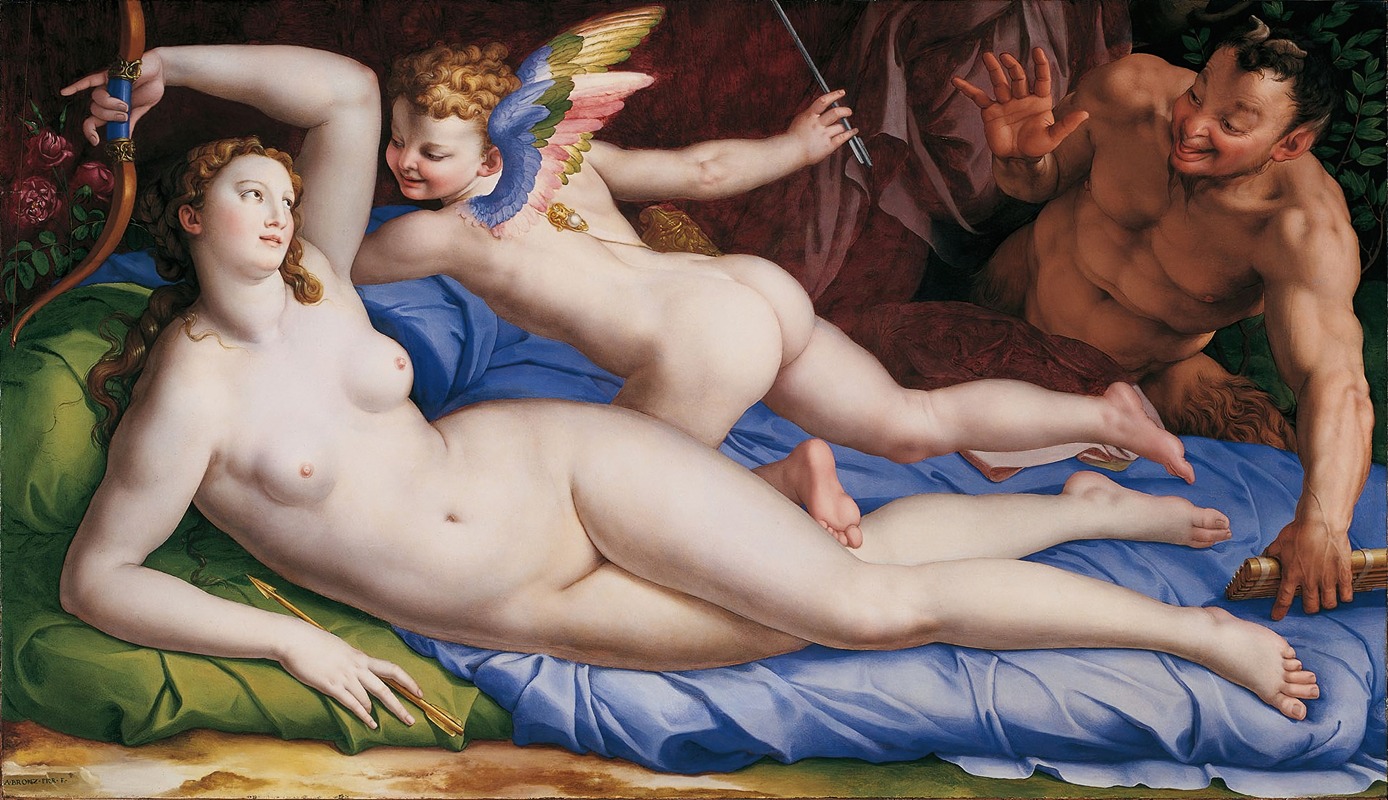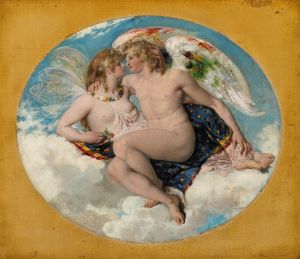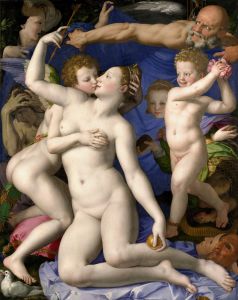
Venus, Cupid And Satyr
A hand-painted replica of Agnolo Bronzino’s masterpiece Venus, Cupid And Satyr, meticulously crafted by professional artists to capture the true essence of the original. Each piece is created with museum-quality canvas and rare mineral pigments, carefully painted by experienced artists with delicate brushstrokes and rich, layered colors to perfectly recreate the texture of the original artwork. Unlike machine-printed reproductions, this hand-painted version brings the painting to life, infused with the artist’s emotions and skill in every stroke. Whether for personal collection or home decoration, it instantly elevates the artistic atmosphere of any space.
"Venus, Cupid and Satyr" is a painting by the Italian Mannerist artist Agnolo Bronzino, created around 1550. Bronzino, whose full name was Agnolo di Cosimo, was a prominent painter of the Florentine school and a leading figure in the Mannerist movement. He was known for his sophisticated and elegant style, characterized by elongated figures, intricate compositions, and a refined use of color.
The painting depicts three mythological figures: Venus, the Roman goddess of love; Cupid, her son and the god of desire; and a satyr, a creature from Greek mythology that is part human and part goat, often associated with Dionysian revelry and lust. In this work, Bronzino captures a moment of interaction between these characters, rendered with his typical attention to detail and complex symbolism.
Venus is shown in the center of the composition, reclining gracefully and partially nude, with a serene and composed expression. Her pose is both sensual and dignified, embodying the idealized beauty that was a hallmark of Mannerist art. Cupid, identifiable by his wings and quiver of arrows, is positioned beside her, engaging with the satyr. The satyr, with his goat-like features and muscular form, appears to be in a state of playful mischief, adding a dynamic and somewhat humorous element to the scene.
The painting is notable for its use of vibrant colors and the smooth, polished surface that Bronzino achieved through his meticulous technique. The figures are set against a dark, ambiguous background, which serves to highlight their forms and create a sense of depth. The composition is carefully balanced, with the figures arranged in a harmonious yet dynamic manner that draws the viewer's eye across the canvas.
"Venus, Cupid and Satyr" exemplifies Bronzino's skill in combining classical themes with the stylistic innovations of the Mannerist period. The painting reflects the intellectual and artistic currents of the time, including the fascination with mythology, the exploration of human emotion and sensuality, and the pursuit of technical perfection in art.
This work is part of the collection of the Uffizi Gallery in Florence, Italy, which houses an extensive array of Renaissance and Mannerist masterpieces. The Uffizi Gallery is one of the most famous art museums in the world, attracting millions of visitors each year who come to admire its rich holdings of Italian art.
In summary, "Venus, Cupid and Satyr" by Agnolo Bronzino is a quintessential example of Mannerist painting, showcasing the artist's mastery of form, color, and composition. It captures a moment of mythological interaction with elegance and sophistication, reflecting the cultural and artistic milieu of mid-16th century Florence.


















